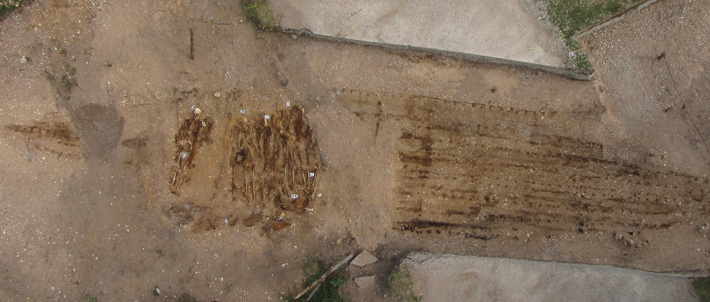Two remarkable ships may show that the Viking storm was brewing long before their assault on England and the continent
(Courtesy Liina Maldre, University of Tallinn)The carefully stacked remains of 33 men were buried in the ship that brought them from Scandinavia to an Estonian island more than a century before the Vikings are thought to have been able to sail across such distances.
According to historians, the Viking Age began on June 8, A.D. 793, at an island monastery off the coast of northern England. A contemporary chronicle recorded the moment with a brief entry: “The ravages of heathen men miserably destroyed God’s church on Lindisfarne, with plunder and slaughter.” The “heathen men” were Vikings, fierce warriors who sailed from Scandinavia and bore down on their prey in Europe and beyond in sleek, fast-sailing ships. In the centuries that followed, the Vikings’ vessels carried them deep into Russia and as far south as Constantinople, Sicily, and possibly even North Africa. They organized flotillas capable of carrying warriors across vast distances, and terrorized the English, Irish, and French coasts with lightning-fast raids. Exploratory voyages to the west took them all the way to North America.
The Vikings’ explosion across Europe and Asia and into the Americas was the result of the right combination of tools, technology, adventurousness, and ferocity. They came to be known as an unstoppable force capable of raiding and trading on four continents, yet our understanding of what led up to that June day on Lindisfarne is surprisingly shaky. A recent discovery on a remote Baltic island is beginning to change that. Two ships filled with slain warriors uncovered on the Estonian island of Saaremaa may help archaeologists and historians understand how the Vikings’ warships evolved from short-range, rowed craft to sailing ships; where the first warriors came from; and how their battle tactics developed. “We all agree these burials are Scandinavian in origin,” says Marge Konsa, an archaeologist at the University of Tartu. “This is our first taste of the Viking era.”
Read the rest of this article...

No comments:
Post a Comment